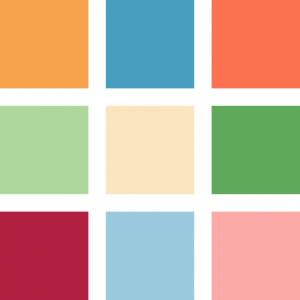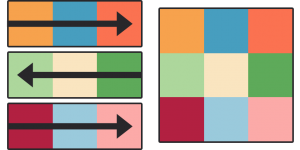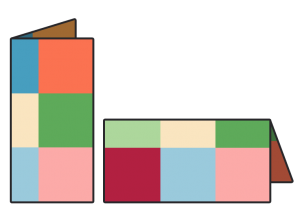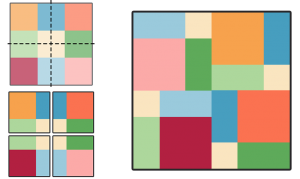This 9 patch block is incredibly easy to make, but gives a fantastic result. Cutting and rearranging larger blocks to form a more intricate design is a satisfying and relatively quick way to create interesting patterns across a quilt-top. Use a mix of colours and patterns for the best effect.
Note: When your pieces are ready to be sewn together, make sure to trim them all to the same size to ensure they fit together correctly.






